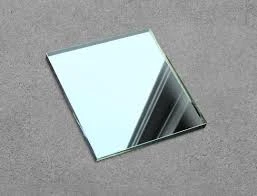

Understanding Bronze Tinted Low E Glass A Stylish and Energy-Efficient Choice
In recent years, builders and homeowners alike have increasingly turned to innovative materials to enhance their dwelling spaces. One such advancement is the use of bronze tinted low emissivity (Low E) glass. This glass offers both aesthetic appeal and energy efficiency, making it an excellent choice for various applications—from residential to commercial properties.
The Aesthetics of Bronze Tinted Glass
Bronze tinted glass possesses a rich and warm hue that adds a touch of elegance to any building. Its distinctive color can enhance the architectural design of a structure while complementing various exterior finishes. Whether used in large windows, sliding doors, or curtain walls, bronze tinted glass can create a sophisticated and modern look that catches the eye.
The tint also offers a degree of privacy. While still allowing natural light to enter, it reduces visibility from the outside without compromising the interior view. This feature is especially valuable in urban settings or densely populated areas, where outside eyes may intrude upon personal spaces.
Energy Efficiency and Environmental Benefits
The benefits of bronze tinted low E glass extend beyond mere aesthetics; they play a significant role in energy conservation. Low E glass is coated with a thin layer of metallic oxides that reflects heat while allowing natural light to enter. This technology effectively reduces the amount of solar heat gain while still maintaining good daylighting, making interiors comfortable while also lowering reliance on artificial heating and cooling.
In the summer, bronze tinted low E glass helps keep buildings cooler by reflecting solar radiation, while in the winter, it retains heat within the interiors, thereby reducing energy costs across the seasons. This characteristic contributes to a lower carbon footprint and enhances the overall sustainability of a building.
Comfort and UV Protection

Another critical aspect of bronze tinted low E glass is its ability to filter harmful ultraviolet (UV) rays. Traditional glass allows about 90% of UV radiation to penetrate, which can result in fading of furniture, carpets, and artwork. In contrast, low E glass significantly reduces UV transmission, protecting valuable interior items from sun damage while also improving comfort for the occupants. By maintaining a stable indoor climate and reducing glare from sunlight, inhabitants can enjoy their spaces more comfortably.
Versatility and Applications
Bronze tinted low E glass is suitable for various applications. In residential settings, it can be installed in windows, patio doors, and skylights to enhance energy efficiency and aesthetics alike. In commercial buildings, it is particularly popular in office spaces, storefronts, and facades where sunlight management and visual appeal are crucial.
In addition to its use in new constructions, many homeowners opt to upgrade their existing windows to this type of glass to improve performance and appearance. The installation of bronze tinted low E glass windows may qualify for tax credits and incentives aimed at energy-efficient renovations, making it a beneficial investment.
Conclusion
The appeal of bronze tinted low E glass lies not only in its aesthetic charm but also in its powerful energy-saving capabilities. By offering a beautiful bronzed tone, enhancing privacy, reducing glare, and protecting against UV rays, this glass serves as both a functional and stylish element in modern architecture.
As the conversation around sustainability and energy efficiency continues to evolve, adopting materials like bronze tinted low E glass is a step forward. It represents a harmonious blend of form and function, appealing to those who care about design as well as the environment.
In an era where climate considerations are paramount, investing in advanced materials such as bronze tinted low E glass is not just a choice for your building—it's a choice for a more sustainable future.